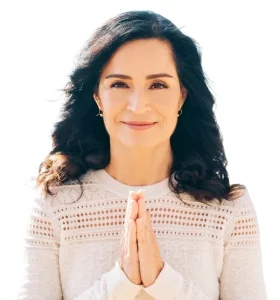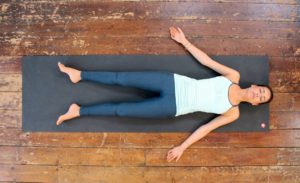Yoga breathing is the foundation of any yoga practice. It helps you to focus your attention on the present moment and keep your mind from wandering. Yoga breathing is also known as pranayama, which means “breath control” in Sanskrit. Many Pranayama practices are very simple to learn, but their effects can also be quite powerful. They can help calm and stabilize your mind, balance your emotions, increase your energy levels and health, balance your chakras, brain and energetic system.
Yoga breathing is the foundation of any yoga practice
Pranayama, which is the control and management of breath, is one of the most important aspect of yoga practice. According to Patanjali’s Yoga Sutras, if you can control the breath you can master everything else in life because pranayama will help stabilize the mind and Prana (energy), increase your ability to achieve better concentration and meditation.
The ancient sages and yogis understood the connection of the breath to the life force energy in the body. They even mapped out the anatomy of the energy body, describing 72,000 nadis (energy channels throughout the body and not visible to the physical eye). They described three main important energy channels or nadis (energy conduits) in our bodies that run along the spine: Ida, Pingala and Sushumna. The Ida nadi runs from left to right from Muladhara Chakra (root chakra), intersecting each chakra to Sahashrara Chakra (crown of head); Pingala Nadi does the same from right to left; Sushumna is located in the center between these two other channels.
When we meditate, these three channels become balanced and energized through prana (life force energy) moving up Sushumna then moving down into either ida or pingala depending on what type of meditation or breathing technique we are using at that time.
What is yoga breathing
Yoga breathing is at the foundation of any Hatha Yoga practice (physical movements and postures). It’s also used in other mind/body disciplines such as meditation and martial arts. It has the effect of bringing ones full awareness and life force energy (Prana or Chi) into the present moment.
An important and foundational type of yoga breathing that helps us to do this is to simply breathing in and out taking full, slow, and rhythmical breaths. The inhale and exhale are about the same length of time. Do this for 5, 10 minutes or longer and see the effect. Daily practice is a great and easy way to relax, center and calm you mind and body.
Connecting your breath with movement
Breathing is the natural, automatic movement of air in and out of the body. We don’t have to think about for it to happen, but when we pay attention to the quality of our breath and consciously breath fully in and out, this creates a deeper awareness of the mind, body, energy connection.
Being present and intentional with the breath is essential in yoga practice. It helps you stay aware and focused on your body and bodily sensations that arise during your practice, rather than focusing on thoughts. And when we are fully present in the body, we connect with a sense of flow in the breath, body and energy. In this way the practice becomes a meditation in motion.
When you’re breathing well, you’re able to move more freely and fluidly in yoga asanas — poses that can help calm your mind, focus your energy inward, build strength and flexibility, take you into meditation in motion, or challenge yourself physically so that you feel stronger in body and mind!

Creating rhythm and flow
Yoga breathing is a very important part of your asana (postures)yoga practice for many reasons, but connecting the rhythmical flow of breath and body are essential for taking you into deeper levels of awareness, relaxation and meditation. In fact, you will feel the body and breath move as one and feel deeply connected and integrated. This integration takes us into deeper layers of awareness, presence, and wellbeing in body, mind, heart, and soul.
When you breathe rhythmically and with purpose, you create rhythm and flow in your movement—and vice versa. When we have both rhythmical breathing and flowing movement, we’re able to more easily find that place where we can become completely present within ourselves during our practice. This will allow us to enjoy the time we spend on our mat more fully than ever before!
How to breathe to create a sense of rhythm and flow to improve your overall yoga experience
- Stay focused during your practice by being aware of the breath flowing in and out, taking full inhalations through your nose into your abdomen first, then lower ribs, then chest and upper back. Then exhale for about the same duration as the inhalation, or slightly longer. Connect with the rhythmical flow of full in and out breaths without a sense of force. As you continue to breath and move like this connecting the fluid movements and breath, it will become more natural and you will feel great.
Breath retention and control techniques
Breath retention (kumbhaka) techniques are a very powerful tool in yoga breathing that can be used to strengthen your mind and body, and to direct the energy (prana) into specific chakra energy centers and nadis (energy channels). It is best to learn this technique from a qualified teacher.
But a good way to start to learn the basics is quite simple: just take in a full breath (into the belly, lower ribs then chest) through your nose, hold it for 3-5 seconds or more depending on how long you’re comfortable holding it, then exhale through the nose and hold the breath out at the end of the exhale for the same 3-5 seconds. Repeat this twice a day, once in the morning before breakfast, and once in the evening before dinner. Do this for 5 minutes or longer if you can to get the benefits.
How do I learn Pranayama breathing techniques
The best way to learn Pranayama breathing techniques is by a teacher who can teach you what the different types of breaths are for and how they might be used in a yoga class or practice session.
Yoga breathing should never feel forced or strained because this can cause stress on your body instead of relaxation. You should feel that you are breathing evenly from your abdomen and into the chest and upper back.
You can also read books about it or online articles if you don’t have access to a teacher. Learning from sources like these are helpful because they give an overview as well as some important details about how each type of breathing works.
Practice focused breathing daily and you will begin to notice the wonderful benefits. Also, focus on your breathing while you’re in yoga poses, not just during Savasana (the final resting pose).
Conclusion
Yoga breathing, or pranayama, is the foundation of yoga. It helps you focus your attention on the present moment and can be used to calm your mind and body. Pranayama is a Sanskrit word that means “control of the life force” or “Pranayama” in addition to its literal translation as “breath control.”
Yoga breathing is much more than just the act of inhaling and exhaling. It is a tool that can be used throughout your yoga practice and day to day life to help you improve your physical, mental and emotional balance, energy levels, reduce stress and calm anxiety. So a daily habit of conscious connection to the breath –on and off the yoga mat– is a simple and immediate way to access the benefits of pranayama and to build a positive habit with many benefits. You can also learn a powerful breathing technique at our Free Pranayama Global Community Class every Wednesday and start tapping into the amazing benefits of breathing!




